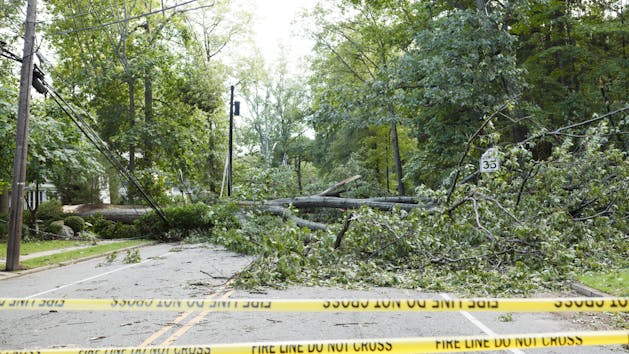Find the right solution for your business with our free Fleet Management Buyer’s Guide.
Driving: One of the Most Dangerous Oilfield Jobs
You might think there are jobs on an oil or gas field that are a lot more dangerous than driving.
These guys are working with menacing equipment, hazardous chemicals and in extreme environments from frigid cold to sweltering heat. These volatile working conditions are responsible for numerous deaths each year. In one particular case a roughneck operating a drilling rig in an isolated location had his arms torn off. There's no question that working in the OGM (Oil, Gas & Mining) industry is highly dangerous.
But there's one occupation in the OGM industry that is proving to be more dangerous than the rest, and sadly it's also one of the most preventable.
Dangers behind the wheel: How bad is it?
The dangers of oilfield driving is best illustrated by the story of an Ohio oilfield crewman, a passenger in a truck driven by an overworked oilfield employee. He had been driving for three hours and 50 minutes, barely ten minutes away from his destination when he fell asleep at the wheel and crashed into a roadside sign, killing his passenger.
But it was more than just a four hour drive back to the head office that lead to this tragic accident. The driver had actually worked a 17-hour shift prior to getting behind the wheel. Illegal in most driving jobs, oil well drivers are permitted to keep working for 20 hours or more in a single shift, making them far more likely to be involved in a driving accident causing serious injury or death.
Under Federal Motor Carrier Safety Administration (FMCSA) rules, there is an exception for oil well drivers where waiting time is counted as 'off duty', meaning drivers can end up working extremely long shifts. Drivers who get behind the wheel already dog tired and, with alertness and concentration lacking, are prime candidates for a harmful, costly driving accident.
In fact, between 2003 and 2008, a third of the almost 650 oilfield worker deaths were caused by driving accidents, a figure much higher than most other industries.
As a fleet owner, you have both a moral responsibility to your workers and their families, as well as an obligation to the business, to maintain high safety standards.
How can you increase safety while maintaining schedules ad profitability?
Safer drivers with smarter technology
While a safer workplace is only possible with the cooperation of both employers and employees, smarter systems can make it more likely that safe practices will be adopted.
Verizon Connect fleet management software brings several functions together on a single Platform that make it easier for both staff and management to implement, monitor and manage worker behavior.
A web-based dashboard featuring alerts and colored trend charts help safety managers quickly see negative patterns or receive instant alerts, allowing them to take quick action to prevent costly tragedies.
Monitor a wealth of location-based intelligence including:
- Real-time alerts that track location, speed & driver behavior — Speeding, swerving or hard braking can be symptoms of a tired driver, as detailed in the example above. Hours of service (HOS) on-board recorders accurately record actual driving time for individual drivers. Journeys can be reviewed for unsafe or critical events.
- Continual engine and driving data — Get alerts for trucks that need maintenance or drilling rigs that require service before they breakdown or cause an accident.
- Integrate with extensive APIs into back office operations — Integrate driving records with your HR software to build up a complete record of worker safety, which can be used to review workplace accidents or offer needed coaching.
- Pre & post-trip inspections — Drivers can use their mobile navigation device to complete electronic inspection forms, which are automatically updated to your central fleet management database and help monitor safety of both vehicles and the load carried.
It's easy to think that implementing safety measures such as this will blow your budget. The good news is that adding Verizon Connect to your fleet management practices can return a positive return on investment within a few short months. Reduced fuel costs, fewer out-of-route miles, less accidents, less paperwork, more efficient maintenance and less time spent route planning quickly adds up to significant cost savings for your company.
If you work in the oil, gas or mining industry, explore all of the ways that Verizon Connect can improve your operations and give you, your drivers and their families more peace of mind.
Find out how our platform gives you the visibility you need to get more done.




